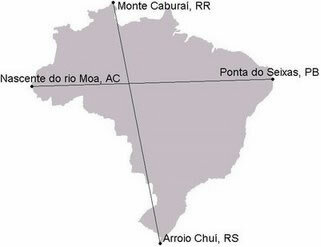For an expression to be considered equation, must satisfy three conditions:
1. Have an equal sign;
2. Have first and second members;
3. Have at least one unknown (unknown numeric term). Unknowns are usually represented by the letters (x, y, z).
Equation Examples
2x = 4
2x → First member.
4 → Second member.
x → Unknown.x + 3y + 1 = 6x + 2y
x + 3y + 1 → First member.
6x + 2y → Second member.
x, y → Unknown.x2 + y + z = 0
x2 + y + z → First member.
0 → Second member.
x, y, z → Unknowns.
Literal Equation Parameter
In the literal equations, in addition to all the characteristics common to any equation, we also have the presence of a letter that is not unknown. This letter is called parameter. Look:
Thex + B = 0 → The and B they are literal terms also called parameters.
3y + The = 4B +ç → The, B and ç they are literal terms also called parameters.
Thex3 - (The + 1) x + 6 = 0 → a is a literal term also called a parameter.
Equation degree with one unknown
O equation degree with an unknown is determined by the largest value that the exponent of the unknown has. Watch:
ay = 2b + c → The degree of the equation is 1, since 1 is the largest value that the unknown y can take.
x4 + 2ax = bx2 + 1 → The degree of the equation is 4, since 4 is the largest value that the exponent of the unknown x can take.
y3 + 3by2 – ay = 12c → The degree of the equation is 3, since 3 is the largest value that the exponent of the unknown y can take.
ax2 + 2bx + c = 8 → The degree of the equation is 2, since 2 is the largest value that the exponent of the unknown x can take.
Equation degree with two unknowns
O degree for that kind of equation is checked for each unknown. See the example below:
axy + bx3 = - xy4
In relation to the unknown x, the degree is 3.
With respect to unknown y, the degree is 4.axy = + xy - 2
In relation to the unknown x, the degree is 1.
With respect to the unknown y, the degree is 1.bx3z = 2z2
In relation to the unknown x, the degree is 3.
In relation to the unknown z, the degree is 2.
Literal equation of complete or incomplete second degree
THE equation literal of high school can be of the type complete or incomplete. Remember that the quadratic equation is given by:
ax2 + bx + c = 0 → ax2 + bx1 + box0 = 0
The literal quadratic equation will be complete if it has the unknowns x2,x1 and x0 and the coefficients a, b and c. Look at the examples:
-
2x2+ 4x + 3c = 0 → is a complete literal equation.
Unknown = x
Descending order of unknowns: x2, x1, x0
Coefficients: a = 2a, b = 4, c = 3c -
3x2 - 5th = 0 → is an incomplete literal equation as it does not have the term bx.
Unknown = x
Descending order of unknowns: x2, x0
Coefficients: a = 3, c = - 5a -
y² - 2y + a = 0 → is a complete literal equation.
Unknown = y
Descending order of unknowns: y2y1y0
Coefficients: a = 1, b = - 2, c = a -
x² + 6nx = 0 → is an incomplete literal equation as it lacks the term c.
Unknown = x
Descending order of unknowns: x2, x1
Coefficients: a = 1, b = 6n
By Naysa Oliveira
Graduated in Mathematics
Source: Brazil School - https://brasilescola.uol.com.br/matematica/equacoes-literais.htm

